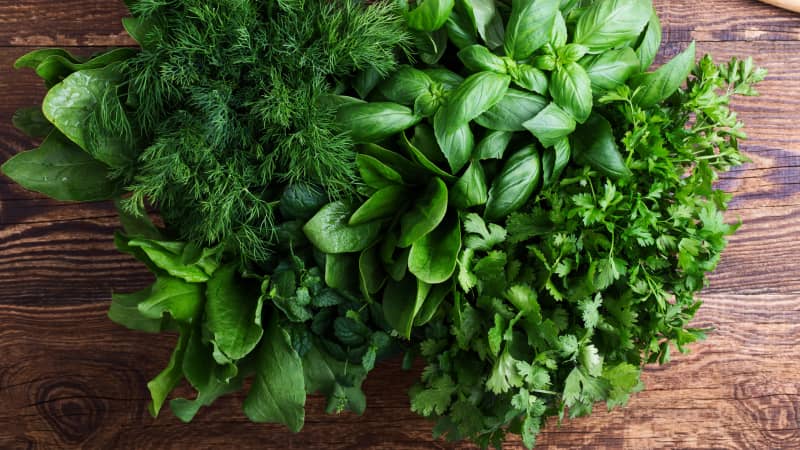When prepping your ingredients for a recipe, sometimes a shortcut is appreciated, especially when the ingredient list is extra long.
Do You Really Need to Stem Your Herbs? It Depends.
Published Aug. 15, 2022.

One of the ingredients that can be time-consuming to prep is fresh herbs, especially when you have to manually remove the leaves from their stems. Luckily, there are plenty of herbs where you don’t have to take that extra time.
Certain herbs you can keep the stem on and just chop away. However, there are others where you really need to take the extra time to stem them. If you don’t you’ll be left with bitter flavors and an unpleasant, woody texture added to your recipe.
Here is a quick guide for when to stem and when not to stem.
Sign up for the Notes from the Test Kitchen newsletter
Our favorite tips and recipes, enjoyed by 2 million+ subscribers!
Leave the Whole Stem On
- Cilantro
As far as not needing to remove any stem at all, cilantro is the lone wolf in this category. In fact, we even had tasters eat a whole sprig of cilantro to see if they noticed a significant flavor change.
Surprisingly, they didn’t. In fact, they really enjoyed the sweet, fresh taste of the stems. Though the flavor gets more potent as you work your way down the stem, it never turns bitter. So, if you don’t mind a bit of crunchy texture in your food, feel free to chop all of your cilantro with the stem on.
Use Some of the Stem
These herbs are also candidates for minimal prep work, but we still suggest doing a little bit.
- Parsley
- Dill
- Mint
- Basil
For parsley, we did the same test as with cilantro, with slightly different results. With fresh- and herbal-tasting leaves, the stem’s flavor became increasingly bitter as we made our way down the sprig. It’s best to remove some of the leaves before chopping for most dishes. But if using for soup or stock (where the off-flavor won’t be noticeable), you can chop your parsley with the stems towards the top of the sprig, where the flavor is more delicate. Just be sure to remove the tough, bitter bottoms.
With dill, you can use the thin and tender stems on your frond, just be sure to cut away any large, tough stems.
Mint stems, especially the portion closest to the leaves have a really vibrant mint flavor. These are fine to use if your recipe calls for mint that is pulverized or eventually strained out. However, the stems have a fibrous texture, which could be an issue if you’re leaving them in your dish.
You can use basil's young and tender stems, which are located closer to the leaf. Discard the thicker and older parts of the stem, which can be bitter.
The Complete Salad Cookbook
Say goodbye to so-so salads. The Complete Salad Cookbook is a game-changing compilation of failproof, modern salad recipes.Take the Time to Remove the Stems
These herbs boast tough, woody stems which are really unpleasant to eat. To stem these herbs, run your thumb and forefinger along the stem to release the leaves.
- Rosemary
- Oregano
- Thyme
There is one exception, though: Sometimes rosemary or thyme will have a thin, delicate stem. If you happen to have a sprig that fits that criteria, you can chop the stems with the leaves without having to worry about adding an unpleasant texture to your food. For everything else, though, remove those leaves.
Lead photo: istetiana, Getty images
